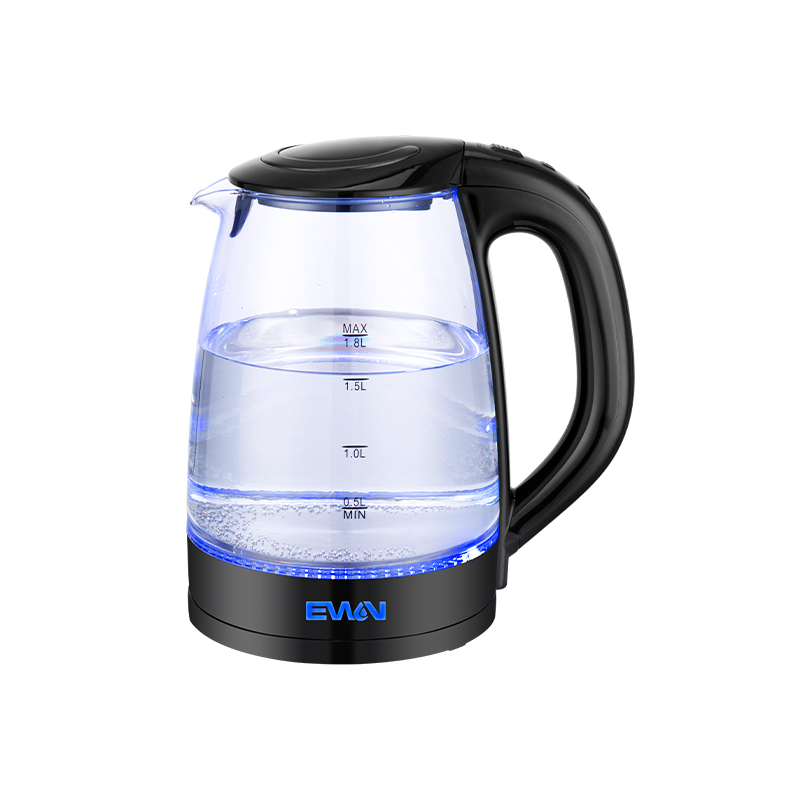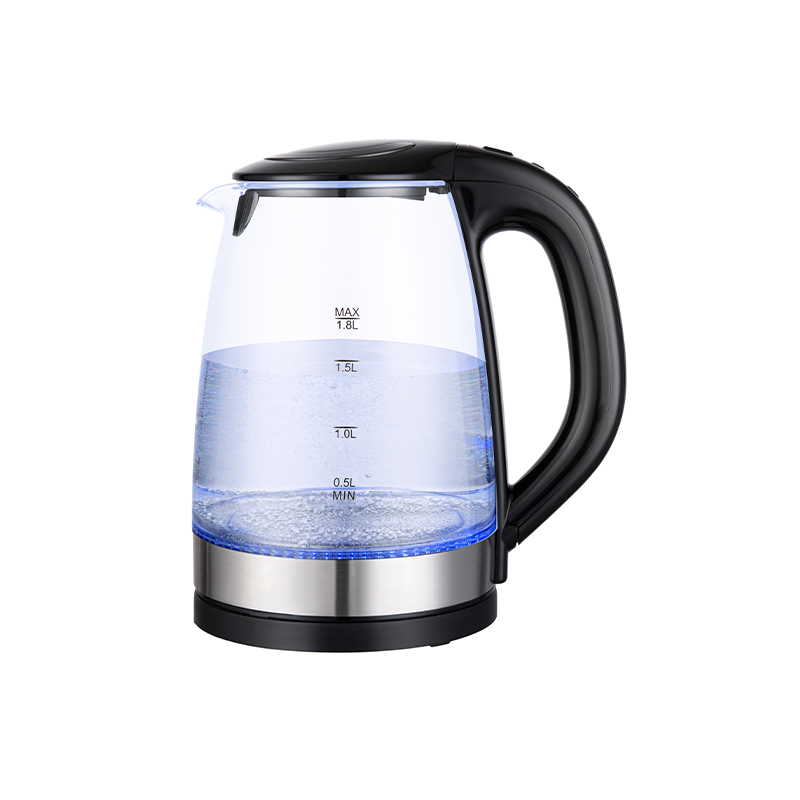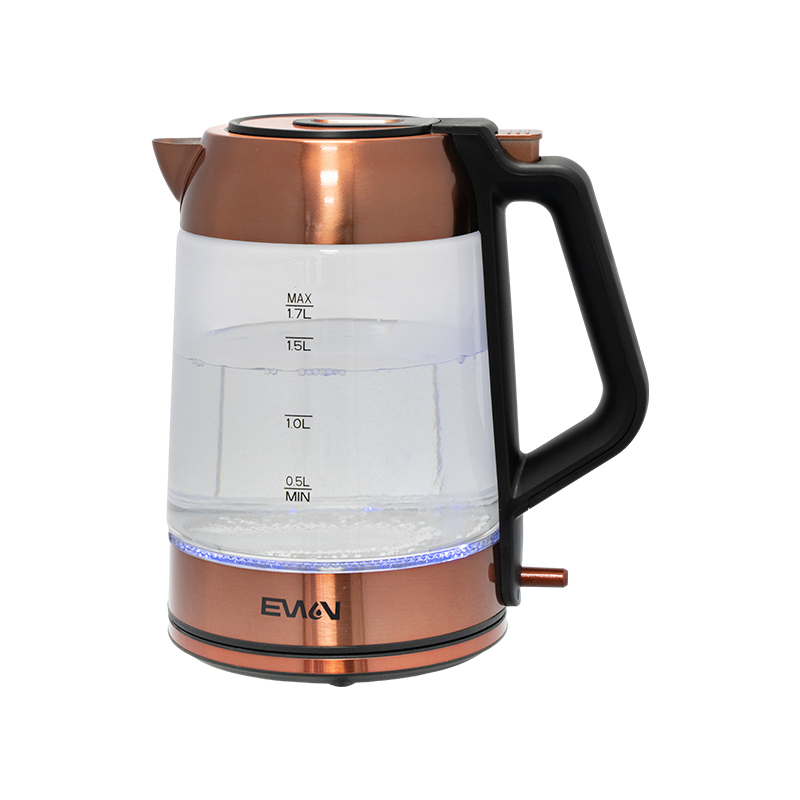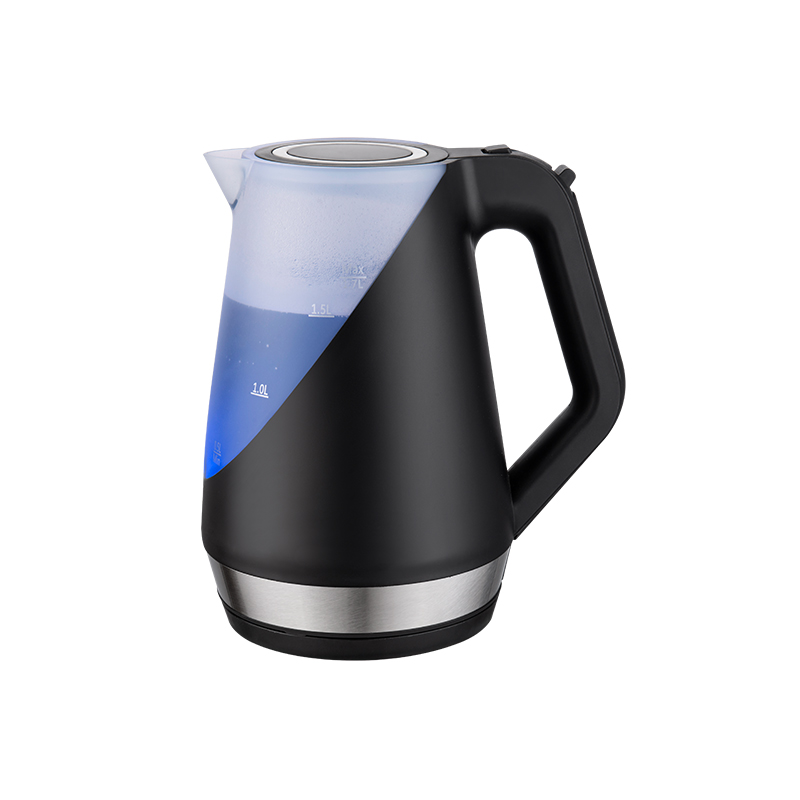+86-18667862027
Web Menu
Product Search
Exit Menu
What are the advantages of a plastic kettle compared to a glass or stainless steel kettle?
Material Characteristics of Plastic Kettles
Plastic kettles are primarily made from food-grade polymers such as polypropylene (PP) or polycarbonate (PC), which provide lightweight properties while maintaining sufficient durability for daily use. These materials are designed to withstand boiling water temperatures without deforming, and they are often reinforced to ensure safety in repeated heating cycles. Compared to glass or stainless steel, plastic materials allow more flexibility in design and color options, making them attractive for household use. Their insulating characteristics also reduce the exterior heat transfer, which can make them safer to handle immediately after boiling water.
Weight and Portability Advantages
One of the practical advantages of a plastic kettle is its lighter weight compared to glass and stainless steel models. Stainless steel kettles are denser and heavier, and glass kettles must use thicker walls to avoid breakage, which adds weight. For users who need to carry the kettle around the kitchen or for travel purposes, plastic kettles provide an easier handling experience. This characteristic is particularly beneficial for elderly users or those who prefer more ergonomic products that do not strain the wrist or hand during pouring.
Durability Against Breakage
Plastic kettles generally offer greater resistance to accidental impacts compared to glass kettles, which can crack or shatter if dropped. Although stainless steel kettles are also durable, they may dent or deform under impact. Plastic kettles, being less brittle, can withstand common household accidents without significant damage. This durability makes them suitable for families with children or environments where accidental drops are more likely.
Heat Retention and Exterior Safety
The insulating property of plastic provides another advantage. Unlike stainless steel, which can become hot to the touch after boiling, plastic kettles usually maintain a cooler exterior surface. Glass kettles, being a conductor, also become hot and require careful handling. Plastic kettles reduce the risk of accidental burns, making them a safer option for households with children or elderly members who may have slower reflexes. Additionally, their insulation helps maintain water temperature for a longer period compared to glass.
Design Flexibility and Aesthetics
Plastic kettles allow more flexibility in design compared to glass or stainless steel. Manufacturers can mold plastics into a variety of shapes, add ergonomic handles, and produce them in multiple colors and patterns. Glass kettles typically maintain a transparent and uniform look, while stainless steel options often have a metallic finish. Plastic offers customization that aligns with different kitchen aesthetics, catering to users who prefer matching appliances with interior themes.
Cost and Market Accessibility
Plastic kettles are generally more affordable than glass and stainless steel models, making them accessible to a broader range of consumers. The lower material and manufacturing costs allow producers to supply these products at competitive prices while maintaining essential safety standards. This affordability makes plastic kettles attractive for students, families on a budget, or those who require an additional kettle for occasional use without significant expense.
Noise Reduction in Operation
Another subtle advantage of plastic kettles is their noise-dampening quality. The polymer material reduces the resonance that occurs during boiling, making the kettle quieter compared to stainless steel kettles, which can amplify sound. Glass kettles also produce more noticeable bubbling noise due to direct heat transfer. While noise level may not be a primary factor in purchase decisions, it contributes to a more comfortable experience in environments where reduced noise is valued.
Comparison of Material Properties
The following table outlines a comparison of plastic, glass, and stainless steel kettles in terms of weight, durability, safety, and cost.
| Property | Plastic Kettle | Glass Kettle | Stainless Steel Kettle |
|---|---|---|---|
| Weight | Lightweight, easy to carry | Heavier due to thick glass walls | Moderate to heavy, depending on design |
| Durability | Resistant to breakage, may scratch | Prone to cracks and shattering | Resistant to impact but may dent |
| Exterior Safety | Cooler surface during boiling | Hot to touch, needs caution | Hot surface, may cause burns |
| Design Flexibility | Wide range of colors and shapes | Limited to transparent designs | Metallic finishes, fewer variations |
| Cost | Generally lower, budget-friendly | Higher due to material processing | Higher due to durability and finish |
Maintenance and Cleaning
Plastic kettles are relatively easy to clean, although they may be more prone to staining compared to stainless steel or glass. Scale build-up from hard water can be managed with standard descaling agents, and their lightweight nature makes them easier to handle during cleaning. Glass kettles allow visibility of scale accumulation but require careful handling to avoid cracks. Stainless steel kettles resist staining but may require more thorough scrubbing to maintain their metallic finish.
Energy Efficiency Considerations
The insulating properties of plastic also influence energy efficiency. By retaining heat better and reducing heat loss through the kettle body, plastic kettles may use slightly less energy to keep water at high temperatures compared to glass or stainless steel versions. While the difference may not be substantial in every household, it contributes to long-term efficiency in frequent use cases.
Safety in Specific Environments
Plastic kettles are often favored in environments where safety is prioritized over premium aesthetics, such as schools, offices, or shared accommodation. Their resistance to shattering reduces the risk of dangerous sharp fragments that glass kettles can produce if broken. Additionally, their cooler exterior makes them more practical for environments where multiple users interact with the appliance throughout the day.
Suitability for Travel and Outdoor Use
Due to their lightweight construction and resistance to breakage, plastic kettles are suitable for travel or outdoor settings such as camping, caravans, or temporary living spaces. Glass kettles are generally unsuitable for travel due to fragility, and stainless steel kettles, while durable, are heavier and less convenient to carry. Plastic kettles balance durability with convenience, making them a practical choice for mobile lifestyles.
Potential Limitations to Consider
While plastic kettles offer many advantages, there are also considerations to keep in mind. They may be more susceptible to scratching and discoloration over time, especially with frequent use. Some users may also prefer the appearance of glass or stainless steel for premium kitchen aesthetics. However, improvements in material quality and safety standards ensure that plastic kettles continue to meet consumer expectations in terms of function and durability.
Consumer Preferences and Market Trends
Market data suggests that consumer preferences often balance cost, safety, and appearance when choosing a kettle. Plastic kettles remain popular due to their affordability and practicality, while glass kettles attract consumers who value visual aesthetics and the ability to observe boiling water. Stainless steel kettles appeal to users seeking long-term durability and a modern metallic design. Each material has its niche, but plastic kettles often dominate in households seeking an everyday solution with minimal cost and maintenance.
Performance and Longevity Evaluation
Evaluating the longevity of a kettle depends on how frequently it is used and how well it is maintained. Plastic kettles can last several years if properly cared for and not subjected to misuse. Their durability against cracking and shattering ensures that they often remain functional even in active households. Stainless steel kettles typically have the longest lifespan, followed by plastic and glass. However, the balance between longevity, cost, and safety continues to make plastic kettles attractive to a wide consumer base.
Summary of Practical Advantages
The combination of lightweight handling, affordability, breakage resistance, and safety makes plastic kettles a practical option for everyday household use. Their adaptability to different environments and ease of maintenance further contribute to their widespread popularity. While glass and stainless steel have their own advantages, plastic kettles offer a blend of characteristics that align well with the needs of users prioritizing convenience, safety, and cost-effectiveness.
address
No.935 Qiye Road, Zhouxiang Town, Cixi City, Zhejiang Province, China
Sale’s Email
leila@nbewin.com
sales8@nbewin.com
sales9@nbewin.com
Copyrighte Ningbo Ewin Electrical Appliances Co., Ltd. All Rights Reserved.












